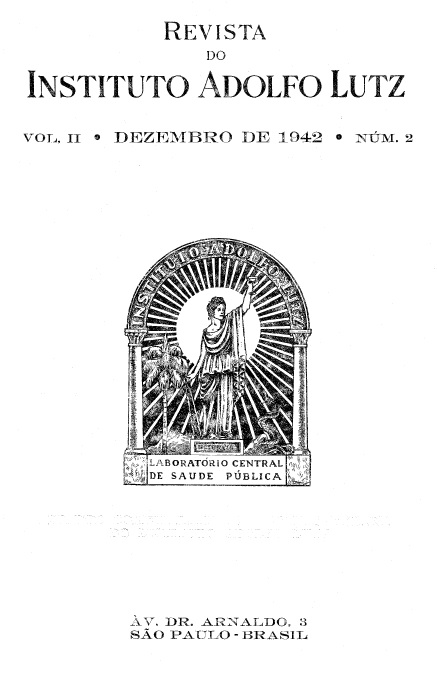Contribution to the study and to the application of Howard method for fungi counting in tomato products
Abstract
The authors try to study and suggest some observations to Howard's technique for the microscopic count of fungi in tomato products and at the same time consider the necessity of determining, in our Bromatological Code, a limit for the number of positive fields with mycelii of fungi for these products, according to their density. The observations refer to Howard's method and try to point out all the details in which there are yet difficulties in the interpretation, illustrating these with designs and photomicrographs. There is ma de a botanical and microscopical study of the tomato and of the fungi which attack it during the different phases of the elaboration of the industrial product. The experimental part was made in the laboratories of the Instituto Adolfo Lutz, starting with 6 samples of tomato juice, differently contamined and submitted to evaporation in the incubator at 55-60°C, first to half and afterwards to 1/8 of its initial volume, so as to obtain the consistency of commercial extracts and pastes.In all the phases the sample has passed the following analytical procedures: determination of moisture, of dry extract, of density and microscopic count of the fungi, by the techniques A and B. Technique A - Howard's method - modified by Rivas. Technique B - Howard's method (modified) in with to the sample previously weighed (and not measured) there were added 20 drops of an alcoholic solution of tionine at 1%, and afterwards there was made a dilution with distilled water. This technique, tried out by the authors, gave excellent results not only because of the uniform coloring of all the elements of the microscopic field, but also because of the fact that it remained fairly clear and without refraction. There are given various tables with abstracts of the experiments and their interpretation, As a result of their observations the authors came to the following conclusions:There should not be adopted only one figure of tolerance of positive fields for all tomato products. The increase of positive fields mantains a certain proportionality with the concentration of the product. The sample should be weighed (gr.) and not measured (ml.) when the dilution is made. The use of a coloring matter favors the microscopical observation. The count of 25 or 50 fields for each mount gives approximate results. The authors consider as necessary and justified the fixation of the following limits for the various tomato products :Juices up to 20% of positive fields. Common pastes up to 30% of positive fields extracts(simple, douple and triple) up to 50% of positive fields.
Published
1948-01-24
How to Cite
G, J. P., & Menezes Junior, J. B. F. de. (1948). Contribution to the study and to the application of Howard method for fungi counting in tomato products. Revista Do Instituto Adolfo Lutz, 8(1-2), 99-136. Retrieved from https://periodicoshomolog.saude.sp.gov.br/index.php/RIAL/article/view/33181
Issue
Section
ORIGINAL ARTICLE










